Please bear with my long question, I am trying to make it as clear as possible. (As found in another question.)
In the example below, all rotate buttons are a test replacement for the gyro values coming in from a gyroscope sensor. The sensor is fixed to the real world torso, so the buttons are meant to represent rotation deltas to be applied to the virtual torso in respect to the torsos coordinate system, not the scene coordinate system.
All buttons work fine by themselfs if starting from a "zero" rotation. But when I press 3 times yaw, and then roll, then I see that the roll rotation works on the scene axes. But I would like to apply it to the current torso rotation instead.
I have already tried several suggestions to related problems from here, but did not come to a solution.
A side note: I am not sure if the terms yaw, pitch and roll are usually bound to euler angles, so I want to underline that to my understanding the values from the gyro sensor are not euler angles, as they represent rotation deltas relative to the current torso rotation, and not accumulated angles "absolute" to the torso starting point. So if I have used these terms inappropriately please try to understand what I have meant anyway.
(Background info: I have a robot project roboshock.de with a gyroscope sensor connected to the robots torso, and I want to visualize the rotation of the robot on the screen. The rotate buttons in the below example are only a test replacement for the gyro values coming in from the sensor.)
Any help is much appreciated.
import javafx.application.Application;
import javafx.event.ActionEvent;
import javafx.event.EventHandler;
import javafx.scene.Group;
import javafx.scene.Parent;
import javafx.scene.Scene;
import javafx.scene.control.Button;
import javafx.scene.layout.HBox;
import javafx.scene.layout.StackPane;
import javafx.scene.paint.Color;
import javafx.scene.paint.PhongMaterial;
import javafx.scene.shape.Box;
import javafx.scene.transform.Rotate;
import javafx.stage.Stage;
public class PuppetTestApp extends Application {
int width = 800;
int height = 500;
XGroup torsoGroup;
double torsoX = 50;
double torsoY = 80;
public Parent createRobot() {
Box torso = new Box(torsoX, torsoY, 20);
torso.setMaterial(new PhongMaterial(Color.RED));
Box head = new Box(20, 20, 20);
head.setMaterial(new PhongMaterial(Color.YELLOW.darker()));
head.setTranslateY(-torsoY / 2 -10);
torsoGroup = new XGroup();
torsoGroup.getChildren().addAll(torso, head);
return torsoGroup;
}
public Parent createUI() {
HBox buttonBox = new HBox();
Button b;
buttonBox.getChildren().add(b = new Button("Exit"));
b.setOnAction( (ActionEvent arg0) -> { System.exit(0); } );
buttonBox.getChildren().add(b = new Button("pitch up"));
b.setOnAction(new TurnAction(torsoGroup.rx, -15) );
buttonBox.getChildren().add(b = new Button("pitch down"));
b.setOnAction(new TurnAction(torsoGroup.rx, 15) );
buttonBox.getChildren().add(b = new Button("Yaw left"));
b.setOnAction(new TurnAction(torsoGroup.ry, -15) );
buttonBox.getChildren().add(b = new Button("Yaw right"));
b.setOnAction(new TurnAction(torsoGroup.ry, 15) );
buttonBox.getChildren().add(b = new Button("Roll right"));
b.setOnAction(new TurnAction(torsoGroup.rz, -15) );
buttonBox.getChildren().add(b = new Button("Roll left"));
b.setOnAction(new TurnAction(torsoGroup.rz, 15) );
return buttonBox;
}
class TurnAction implements EventHandler<ActionEvent> {
final Rotate rotate;
double deltaAngle;
public TurnAction(Rotate rotate, double targetAngle) {
this.rotate = rotate;
this.deltaAngle = targetAngle;
}
@Override
public void handle(ActionEvent arg0) {
addRotate(torsoGroup, rotate, deltaAngle);
}
}
private void addRotate(XGroup node, Rotate rotate, double angle) {
// HERE I DO SOMETHING WRONG
// not working 1:
//Transform newRotate = new Rotate(angle, rotate.getAxis());
//node.getTransforms().add(newRotate);
// not working 2:
double x = rotate.getAngle();
rotate.setAngle(x + angle);
}
public class XGroup extends Group {
public Rotate rx = new Rotate(0, Rotate.X_AXIS);
public Rotate ry = new Rotate(0, Rotate.Y_AXIS);
public Rotate rz = new Rotate(0, Rotate.Z_AXIS);
public XGroup() {
super();
getTransforms().addAll(rz, ry, rx);
}
public void setRotate(double x, double y, double z) {
rx.setAngle(x);
ry.setAngle(y);
rz.setAngle(z);
}
public void setRotateX(double x) { rx.setAngle(x); }
public void setRotateY(double y) { ry.setAngle(y); }
public void setRotateZ(double z) { rz.setAngle(z); }
}
@Override
public void start(Stage stage) throws Exception {
Parent robot = createRobot();
Parent ui = createUI();
StackPane combined = new StackPane();
combined.getChildren().addAll(ui, robot);
combined.setStyle("-fx-background-color: linear-gradient(to bottom, cornsilk, midnightblue);");
Scene scene = new Scene(combined, width, height);
stage.setScene(scene);
stage.show();
}
public static void main(String[] args) {
launch(args);
}
}



